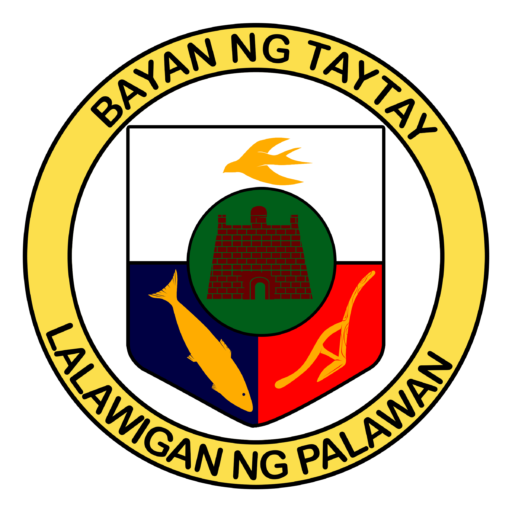The kingdom of taytay
The ancient town Taytay derived its name from “Taytayan,” a wooden or bamboo walkway used by the native that served as a connecting bridge from one nearby coastal area to another. It was earlier inhabited by the indigenous mountain tribe of Tagbanwa.
Later, Taytay became part of the vast land and naval territory of the Royal Sultanate of Brunei and its embassy, the Sultanate of Sulu, that stretches its domain from Pulaoam (now Palawan) to the Kingdom of Mayniad (Manila) in the 14th century. Ancient Muslim genealogy revealed that all the sultans and rahas from this vast Muslim empire in the Philippines during the 15th century were all related by blood or by royal marriages.

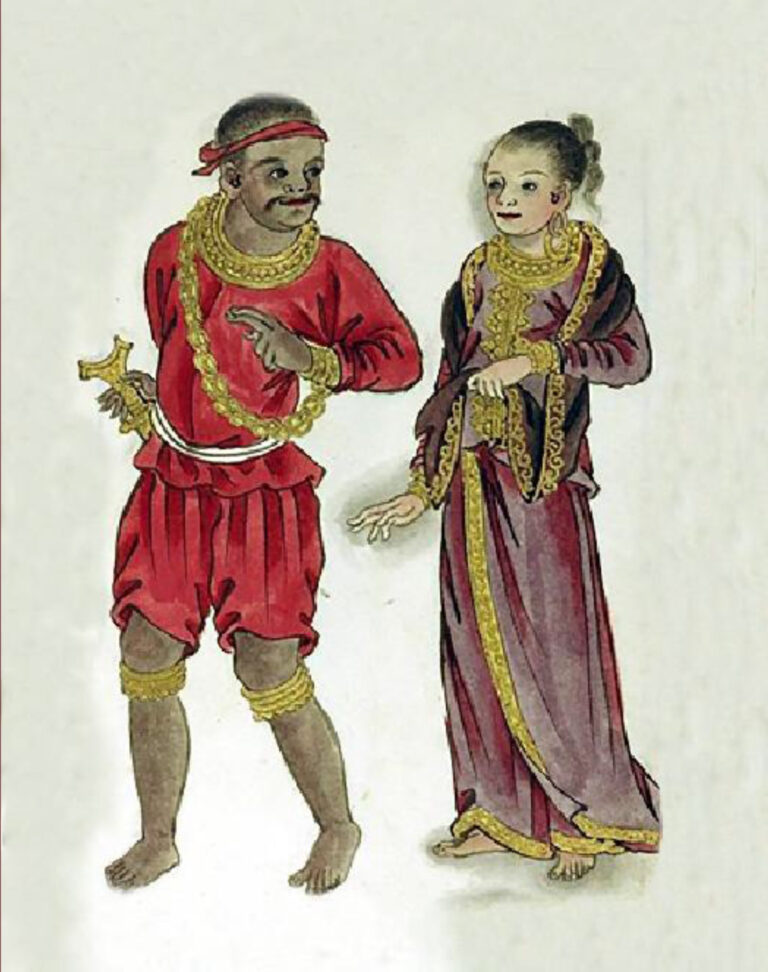
NATIVE FILIPINO CHIEFTAIN
Native Filipino Chieftain and his wife wearing ornamental garments and jewelry as shown in the 16th Century Boxer Codex.
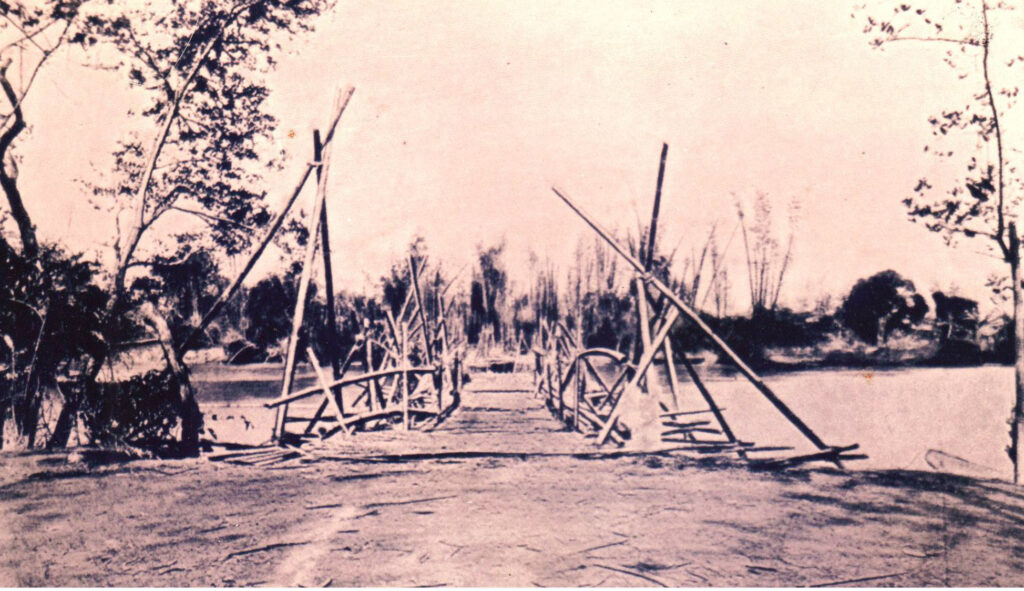
The first western historical mention of Taytay came from the Italian chronicler, Antonio Pigafetta, after the death of Portuguese explorer, Ferdinand Magellan in Mactan, Zebu (Cebu) in the hands of the warriors of Muslim chieftain Datu Lapu Lapu in 1521 in an attempt to find a route to circumnavigate the world. The Vittoria (Victoria), the flagship from the expedition of Magellan under the new commander, Capitan Juan Sebastian de Elcano continued the voyage to the northern part of Pulaoam (Palawan). Pigafetta wrote that they anchored in Porto de Taitai (Taytay), met Datu Maamud, the chieftain of Taytay, who was the nephew of Sultan Bolkiah, the king of Brunei, and Sultan Aminul Umara, the King of Sulu and Raha Matanda of Selurong (Manila). They made a blood ritual signifying their friendship and alliances. Elcano’s troops went on to gather provisions for the succeeding trips, and narrated the rich agricultural and fishing bounties of the town, Pigafetta even recorded his first sightings of cockfight as a means of gambling by the natives. However, to assure of a safe passage to the Muslim territories of southern Palawan, Sulu and Brunei, Datu Maamud and his wife joined their ship.
More than a hundred years later, through a joint military and religious expedition led by Augustinian Recollects Fray Francisco de San Nicolas, Fray Ezekiel Moreno (now St. Ezekiel Moreno), Fray Diego Sta. Ana and Hermano Francisco de la Madre de Dios, formally established the town of Taytay and converted into Christianity in 1623. They dedicated the town to Sta. Monica, the Mother of St. Augustine of Hippo, and the Patron of the Augustinians Recollects.
Over the ensuing years, the repeated attacks by both Muslim invaders in their efforts to reclaim their old territory, and Chinese pirates trying to gain control on trade routes, constantly caused severe damages to the wooden fort which prompted the Spanish authority to build a more enduring and powerful fortification made of Gasang (coral stones) and limestone, to solidly defend the town and administer its authority in the vast area now known as Provincia de Paragua.
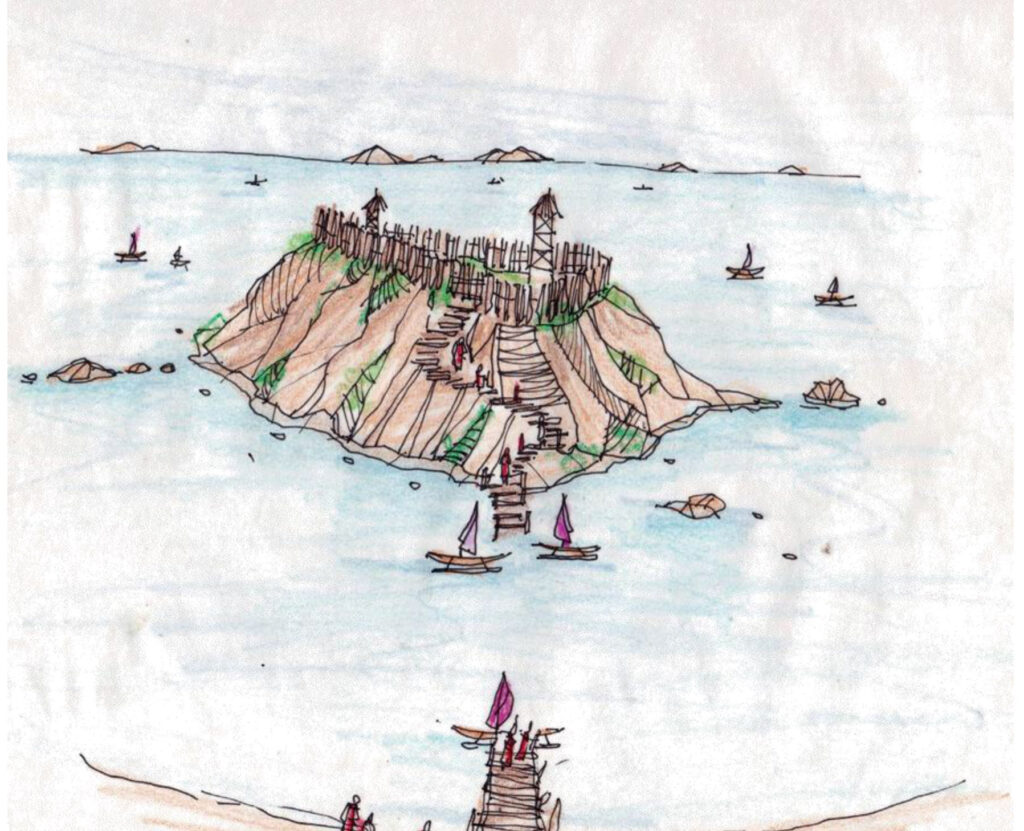
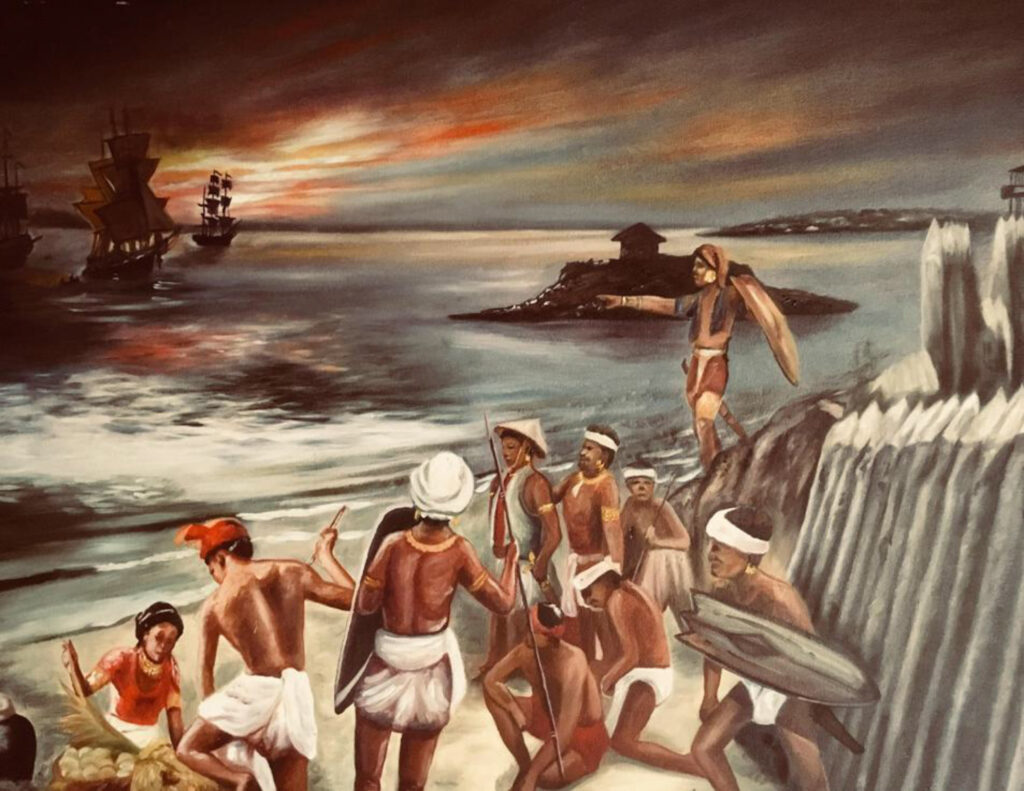
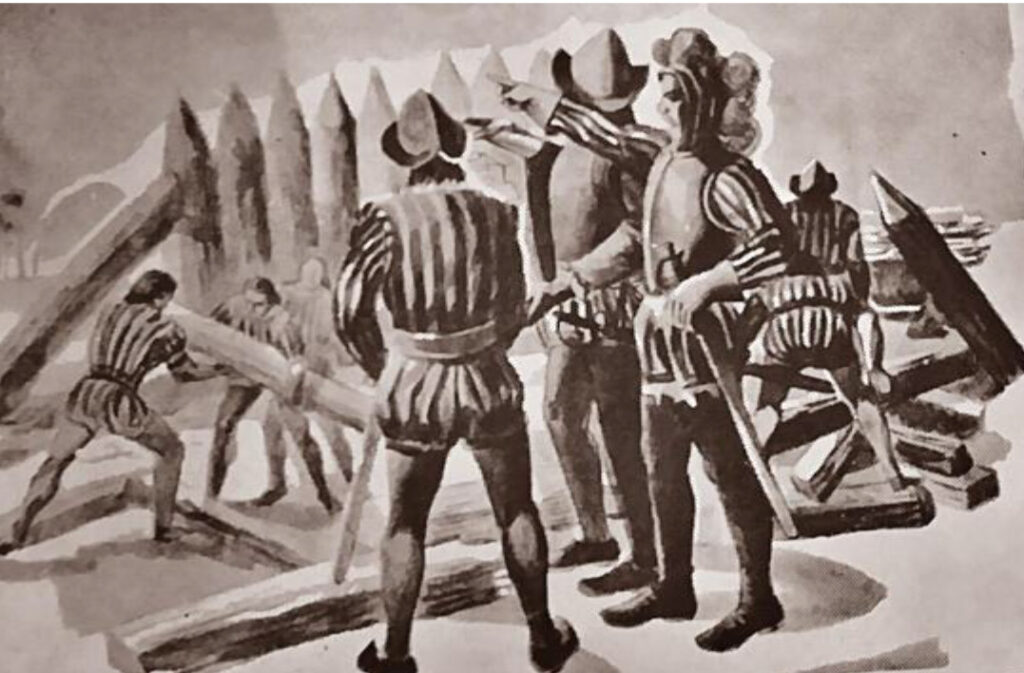
BUILDING THE ISLAND FORTRESS

The original plan was studied and designed in 1721 by military engineers from Spain stationed in Manila named Antonio Fernandez de Rojas in 1721, as he was stationed in Calamianes as his command. Upon the orders of Spanish Goberdanor Heneral Fernando Manuel Bustillos to project a beacon of naval power of Spain in the scenic Baho de Taytay (Bay of Taytay).
Fernandez de Rojas studied the possible sites of the future stone fort, and noted two; one on the top of a hill in which there was the earlier fort called “kuta” and another on a mogote (flat-topped hillock) that advanced towards the sea, in the eastern part of the town. For each of them, he traced fortification plans in the two months he spent in this place.

The repeated attacks on the fort forced the Spanish Bernardo de Lliumbe (mayor of Calamianes) to raise the necessity of making it stone fort, and in a Board of War held in Manila on March 12, 1723 it was agreed to erect it in the second of the sites studied by Fernandez de Rojas, who was present, and according to the plan he outlined “with sufficiency and well-known knowledge in that advanced art”; He offered at once to provide a copy of the design he made of that fort, “with its scale and explanation,” for the greater and clearer knowledge in the building of the fort.”
The Board of War sends the plans prepared by Don Antonio Fernandez de Roxas to King Philip V of Spain for approval, and immediately commenced for the construction of the island fort. King Philip V gave his approval and de-signed the heraldic coat-of-arms of Fort Sta. Isabel de Paragua, and ordered the carving of the symbol at the wall of the Puerta de la Fuerza or fort entrance, together with the images in relief of St. Francis, Nuestra Senora Maria Auxil-ladora de los Christianos, San Anton de Padua, representing the Augustinian Recollects religious authority. The Fuerza de Sta. Isabel de Paragua was named and dedicated to Santa Isabel, mother of St. John the Baptist, the Patron of the Spanish Royal family during that time, and was made the capital of the vast province of Paragua (now Palawan).
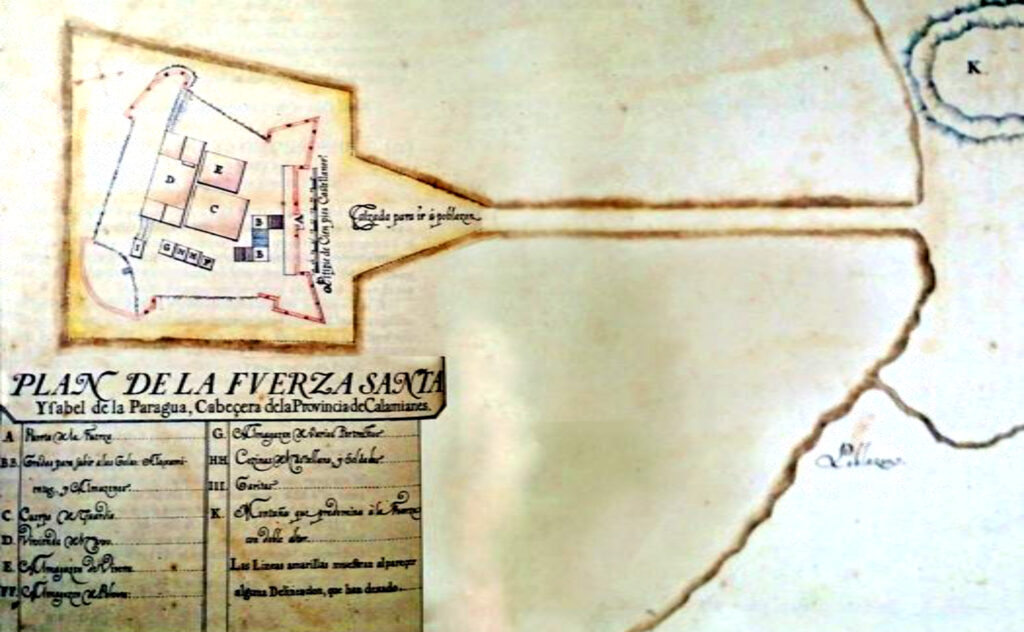
In 1739, as written in the report by Spanish military cartographer, Fernando Valdez Tamon in entitled REPORT In which by order of His Catholic Majesty (May God Protect Him), the strongholds, castles, forts and garrisons of the province under His Royal Dominion in the Philippine Island are listed…he described it as follows.
It stands on a cliff, some 24 feet high, overlooking as and bank, and at high tide the fort is totally isolated.

It is an irregular, quadrilateral construction consisting of 96-foot long stonework curtainwall, with two collateral bastions. The other three walls were a double palisade with an embankment. The two remaining bastion, which until recently were in need of repair, are now being rebuilt and restored to the original state, as far as the irregularity of the rocks permit.

The Fort Sta. Isabel de Paragua, consisted of several structures of wood-en and thatched roof materials mainly for military and defense such as Cuerpo de Guardia (Guard building), Vivienda del Cargo(Fort’s In Charge Office), Al-magazen del Viveres (Food supply storage), aljibe (cistern), Alamagazen de Polvora (gunpowder storage), Cozinas del Castellano y Soldades (Mess room for Spanish soldiers). 89 Spanish officers and soldiers manned the fort, with an annual budget of 1290 pesos and 534 fanegas (sacks) of rice allocation. The four Garitas (guard posts) guarding the four bastions became a symbolic military and naval might of Spain with corresponding names; San Toribio, San Juan, San Miguel and Sta. Isabel, the patron of the fortress.

It was completed under the command of Spanish military engineer, Don Fernando Velez de Arce, where his construction workers consisted of prisoners from other towns in the archipelago. Fort Sta. Isabel was an island fortress detached from the mainland of Taytay by more than 100 meters during high tide, but passable during low tide. The military garrison was constructed across the fort near the shores; however, it was later converted into the Church of Sta. Monica, the patroness of the fort and the town.
The Fuerza de Sta. Isabel is now ready for a larger and profound purpose of its existence of not only defending the town of Taytay, but more importantly serving as a symbolic reminder of the presence of Spanish dominance in the entire archipelago.
LIFE IN THE FORT
After the completion, the fort was manned by a Spanish Infantry Captain, Don Jose Mauricio. He served both as Alcalde Mayor and Gobernadorcillo de Paragua. Spanish authorities from Manila issued an outline of weapons and supplies for its operation, such as 7 bronze cannons and 3 small Lantakas ( small portable canons), 2 bronze half culverins handguns, 20 iron siege gun, 8 bronze stone-throwing engines, and 20 chambers, 2,550 artillery balls, 283 loaded iron grenades, 46 empty iron grenades, 55 harquebus (portable gun supported on a tripod), musket and pinzote balls and 200 arrobas ( unit of weight) of gunpowder to the two regiments, Infanteria Espanola (Spanish Infantry) led by Capitan Pedro Sebastian Gomez, and Infanteria Pampanga (Pampanga Infantry) with 25 soldiers, 3 armor and drum bearers.

During the 18th century, several Muslim attacks in Taytay were fiercely defended by Fort Sta. Isabel, and one of the notable native hero was Don Geronimo Sundulion, a municipal officer, during the 21days siege of Taytay by the Moro pirates in 1739. The pirates asked him to point the secret passages of the fort, but instead, exposed the pirates to the forts’ entry, thus pre-empting their plan for a surprise attack. The pirates tortured and eventually killed him; Don Geronimo saved the local town folks and Spanish soldiers from further aggressions. Sundulion was considered the first recorded hero of Taytay.
Several maritime expeditions were sent to Taytay by various European countries in hope of conquest, scientific and trade purposes between the 17th and 19th century. Dutch Naval officer, Jacob Van Neck (1600-1604), Italian cartographers Giovanni Francesco and Gemelli Careri (1696), British captain, sir William Draper (1759), French captain Alfred Marche’ (1844-1898) and British Naval Officer and surveyor, Captain William Thorton Bate between 1852-1854. He drew the entire island of Paragua and even anchored in Taytay Bay under his command ship, HMS Royalty.
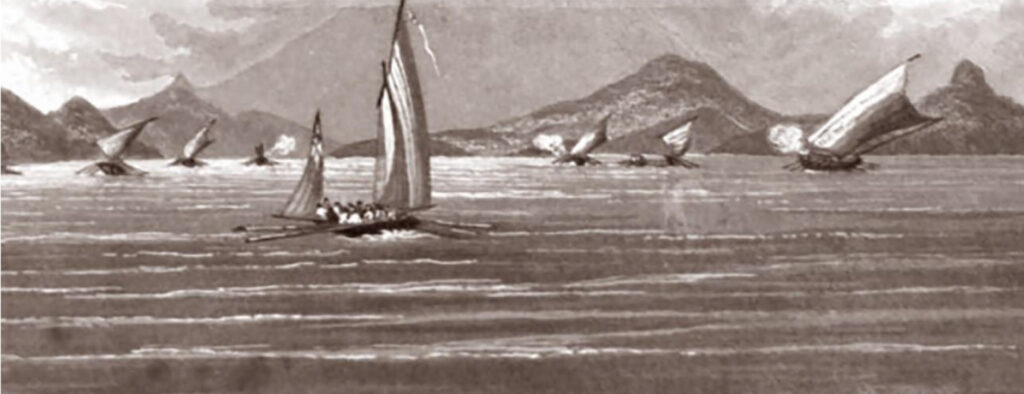

In summary, the Fuerza Sta. Isabel de la Paragua was a unique miniature “Walled City”, a fortress built on top and around a limestone island outcrop, a Spanish military structure, not only as a fortification but more importantly as Spanish provincial command post, the center of the religious, naval headquarter and provincial capital of Paragua, all within the fort, it became the seat of Gobierno Alcadia-Mayor de Calamianes in 1851, and later in 1858 became the seat of Gobierno Politico-Militar de Paragua.
Over the following centuries, the Fort Sta. Isabel de Paragua has successfully defended the town of Taytay. However, due to the inevitable degradation of the fort, aging, and later abandonment of the Spanish controlling the province, the forth as slowly deteriorated. Towards the end of the 19th century, much of the structures on top of the fort are already in ruins, and the Spanish authority converted the Viviendadel Cargo (Fort’s Captain Office) into a chapel dedicated to Sta. Monica. It became both the military and religious beacon of the town of Taytay and the Calamianes islands.
In 1884, Spanish colonial investment in Paragua (Palawan) started in Taytay, the establishment of the agricultural and processing of Azucar, Marca Paragua and later, in 1892, the international trade and Commerce Company named Compania Anonima de Explotacion y Colonization de la Ysla de Paragua.
By the end of the 19th century, the last chieftain of the former kingdom of Taytay was Christianized, His Majesty, Datu Flores Delos Santos Cabaylo I. He belonged to the long line of Muslim rulers that traces its lineage from the royal family of Brunei and Sulu in Taytay that befriended the earlier Spanish forces of Capitan Elcano and Pigafetta.
However, due to the persistent attacks from the Moros and Chinese pirates over the period of years, the Spanish authority strategically transferred its capital to Cuyo in 1873, then later to the newly established Puerto Princesa, located in the middle part of the Provincia de Paragua.
By this time, the former provincial capital of the entire province of Palawan was transformed into Presidio Municipal. In the 1880s, a new Spanish edificio municipal, designed by Obras Publicas was built outside but nearby the fort, and a prominent native of the town became the first Capitan Municipal, Don Fernando Santo Domingo from 1876 to 1880. However, it already started the slow decline of the old town and affected both its military, economic and religious affairs towards the end of the 19th century until the dawn of the 20th century.
Spanish colonial rule in Taytay for over 200 years towards the 1870s brought about “peace” in the entire region, with exception of sporadic Muslim raids and pirates. The daily life in Taytay was generally serene, but wanting for a nationalist call.

SPIRIT OF NATIONALISM
The literary novels of Nationalist, Dr. Jose Rizal’s Noli Me Tangere and El Filibusterismo became a profound inspiration for Filipino longing for independence in the hands of oppressive Spanish colonizers. The mutiny inside Cavite’s Fort San Felipe arsenal causing the execution of the Trece Martires (13 Martyrs) spread like wildfire that several Filipino patriots, one of which was Don Ruperto Lacsamana from Mabalacat, Pampanga, were implicated and sent to Taytay for imprisonment inside Fort Sta. Isabel in 1897. However, Lacsamana’s native “Kapampangan dialect” enabled him to secretly communicate to the officers of the Infanteria de Pampangas manning the Fort. He was able to convince his fellow Kapampangan to revolt against the Spanish authority in the fort as well as in the municipality of Taytay.
There were gun fires and explosion within the fort premises, and after days of fighting, the Spanish Guardia Civil and religious clergies left the town leaving the burned and destroyed fort under the command of Filipino revolutionary soldiers, thus, ending more than three hundred years of Spanish rule in Taytay.
On June 18, 1898, few days after establishment of the revolutionary government of Gen. Emilio Aguinaldo, he appointed Don Estevan Causapin of Taytay as head of the Head of Revolutionary Troops in Palawan, and on March 24, 1899, during the Malolos Congress, President Emilio Aguinaldo appointed Don Hermogenes Constantino as Commsionado de Paragua, and was stationed in the presidio municipal of Taytay.
However, efforts for self-rule and independence was short lived, and in the subsequent days, the political, religious and military landscape of Taytay will be changed dramatically towards the end of the 19th century.
During the late 19th century, Spain seceded the Philippines to the United States, and in the early 20th century much of the original structures inside and on top of the fort was already destroyed, the once- heavily fortified structures is now in ruins, only the adobe outline on the grass landscape served as a silent reminder of its once proud, powerful and glorious history.
With a coming of a new century, came a new colonial rule.
1898
The American troops arrived in Taytay in 1899; the US 1st Separate Brigade Unit led by Commander Marcus Miller arrived from Iloilo with 45 officers and 1,230 army. By this time much of the Spanish structures inside the forts were already gone, they immediately replaced the outdated guns and cannons of the fort and also developed barracks for the American troops outside of the fort and within the inland of Taytay. The forts now served as military bulwark, observation deck, garrison and lighthouse all in one. The land bridges connecting the fort to the main land was also reclaimed for easy access of officers, troops and provisions around the fort’s premises. The Presidente Municipal of Taytay during the arrival of the American was Don Pantaleon Madarcos be-tween 1895 and 1901.
During the American occupation, the name of the province formally changed from Paragua to Palawan. Much of the troops were stationed in Puerto Princesa and Isla de Balabac due to the constant threat of the Muslim raid from Sulu, the stronghold of the Sultanate of Sulu. However, a peaceful agreement was forged between the sultanate of Jolo and the Americans authority in 1901 that lasted for many years. The entire province progress during this period both in economy and trade with the introduction of lumber, fisheries, and other agricultural resources.
Taytay became the symbolic “cultural center” of Palawan because of its unique history as a former pre-colonial ancient kingdom and an old Spanish provincial capital. The highland native called Tagbanwa became integral part of the new society, while the native dialect of Cuyonon was also spoken in larger part of the northern Palawan and the Calamianes Islands. The story and myth about the old town and the old fort endured until the outbreak of the World War II in 1941.
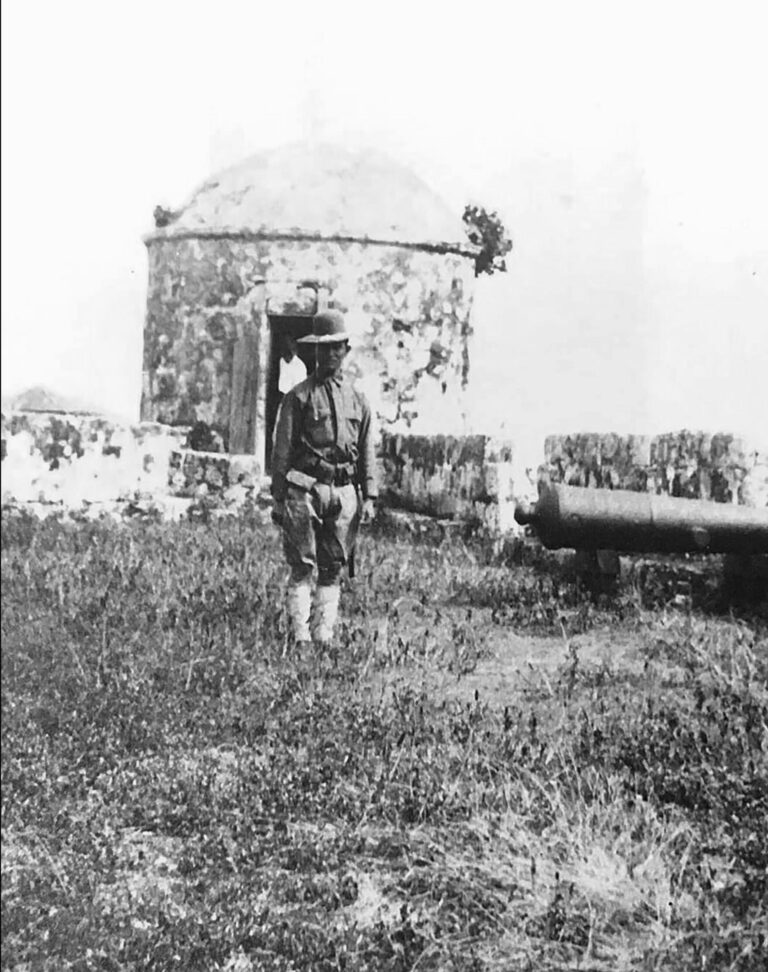
SPANISH GARITA
An American soldier in front of Spanish Garita (Guard Post) and Canyons in 1899.
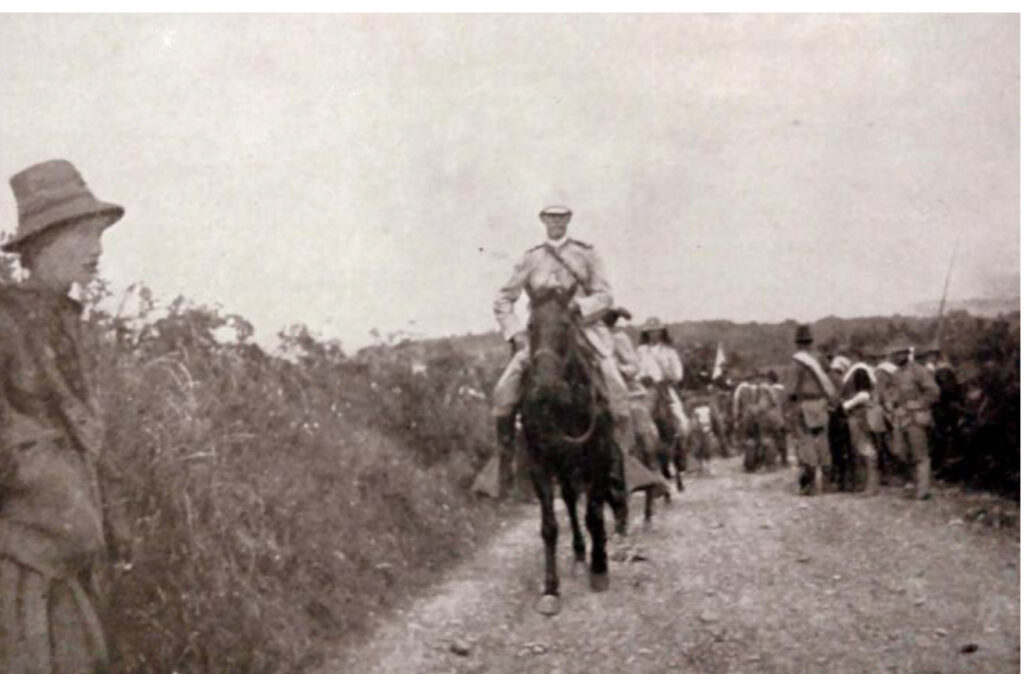

WORLD WAR II IN TAYTAY
Don Francisco Alli was the Municipal Mayor in 1941 during the Japanese occupation in Taytay from 1942 to 1945. The division from the Imperial Japanese 14th Area Army utilized the fort for military and naval purposes and converted the old chapel of Sta. Monica into a Shinto shrine for the most part of their occupation. In 1944, Fort Sta. Isabel became the outpost of the Japanese Imperial General Headquarter in the northern Palawan region, and later, the Imperial 1st Special Forces Division in 1945. It became a highly strategic military communication facility for the Japanese forces.
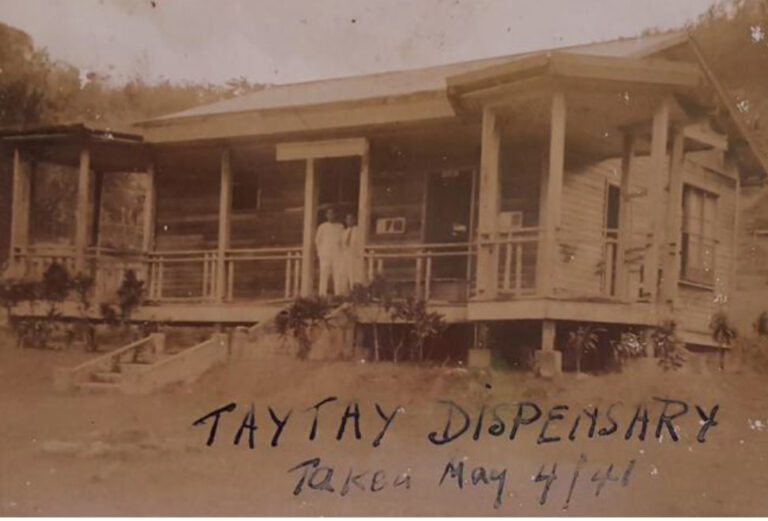
TAYTAY DISPENSARY
Taken May 4, 1941
During the outbreak for the liberation of the Philippines in 1945, Gen. Douglas MacArthur officially designated to reclaim Palawan under the operation code name VICTOR I and II, between February and April of 1945. Guerilla movement was initiated to retake the fort from Japanese control led by Palawan heroes Capt. Carlos Amores, Maj. Pablo Muyoc known as Palawan Special Battalion 6th Military District with Alfred and Paul Cobb, Higinio Mendoza, with Allied Intelligence Bureau Jesus Villamor, and HQ SWPA, Charles Parsons. The arrival of the Allied troops, the US 8th Army Regimen under Lt. Gen. Robert Eichelberger, and with the heroic exploits of some local heroes from Taytay, the town and the fort were successfully reclaimed. It became a strategic victory for the liberation of the entire Palawan province, ending the hostilities of the war in the Philippines and in the Pacific.



TOWARDS THE END OF THE 20TH CENTURY

By the second half of the 20th century, Don Agapito Calalin became the first Municipal Mayor of war-damaged Taytay from 1945-1947, He immediately acted upon the reconstruction and rehabilitation of his town and the fort itself, municipal building was reconstructed as well as the basic needs of his towns-folk. Over the coming decades, the now damaged Sta. Isabel Chapel stood as a profound symbol of failure and neglect. It lost its roof due to strong typhoons and monsoons passing northern part of Palawan every year. Finally abandoning the fort premises, catholic leaders later converted the old Spanish military cuartel outside the fort and transferred the church of Sta. Monica, to become the Apostolic Vicariate of Taytay.


Over the years, several private activities were undertaken inside the fort, such as archeological excavations, treasure diggings and more, all in the efforts to study the underlying valuable resources from the fort. However, it left the fort in much greater state of dilapidation.
During the term of Mayor Roberto Rodriguez; the initial phase to restore the fort and to construct the fort museum and tourism office was realized. The immediate area in front of the fort was reclaimed from the sea, making the fort now connected to the mainland of Taytay.
The rehabilitation effort gave the renewed spirit for the people of Taytay, and inspired by faith and hope that one day, the Fortress of Sta. Isabelde Paragua will be fully restored, protected and preserved, and it will be part of the living built heritage in the country for the generations to come, a symbol of national pride and patrimony.

